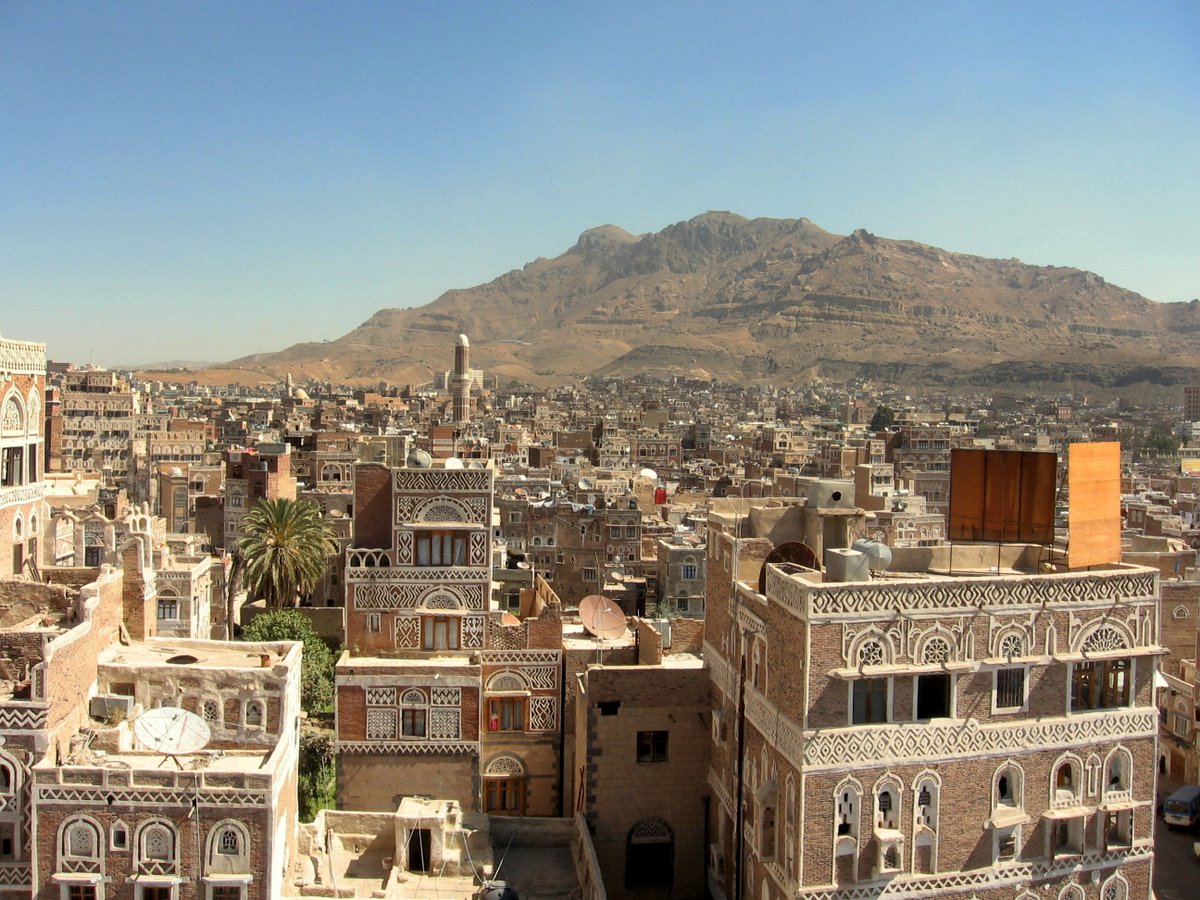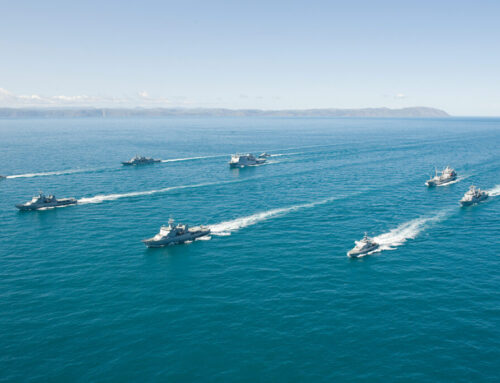Autor foto: Franco Pecchio

The civil war in Yemen and the geopolitics of the Middle East Region
May 15, 2015
Author: Tomasz Otłowski




Autor foto: Franco Pecchio
The civil war in Yemen and the geopolitics of the Middle East Region
Author: Tomasz Otłowski
Published: May 15, 2015
The first months of 2015 were full of events that have significantly worsened the already tense Shia-Sunni relations. This state of affairs also indirectly contributed to the further deterioration of relations between Iran, which has been laying claims to being the patron of all Shiites, and Saudi Arabia, which has similar ambitions with regard to the Sunnis. Yemen has been added to the collection of states and regions, such as Syria and Iraq, where Shiite-Sunni (and, indirectly, Iranian-Saudi) rivalry has acquired a character of an open, armed confrontation. A rapid worsening of the political and security situation in Yemen took place in autumn 2014. All this comes at a time when the fate of the agreement hung in the balance on the Iranian nuclear programme, negotiated under the auspices of the ‘P 5+1’ (Permanent Members of the UN Security Council and Germany), which caused the West to completely neglect other areas of activity of the Islamic Republic of Iran in the Region of the Middle East.
The sudden and unexpected collapse of the internal situation in Yemen pushed the country into the depths of open civil war. Thus, what was avoided during the ‘hot’ months of political breakthrough in 2011 (in the period of the Yemeni Arab Spring), eventually became the reality in Yemen and its people in the spring of 2015. Both factors related to the dynamics of its internal socio-political processes, as well as external elements related to developments in the Middle East in the last several months, have had an effect on the significant deterioration of the situation in the country.
Divided country – the genesis of the conflict
The causes of today’s conflict date back to the beginnings of unified Yemen formed in 1990 from the merger of two, previously separate, Yemeni states. The North and the South have never, in fact, grown together into one strong and coherent state. Both the differences in the economic potential and socio-political factors with the dominant element of a highly developed clan system played their role here. Religious issues had an important role in consolidating socio-political divisions in the country: the North is dominated by Shiites, and the South by the Sunni. As a result of these numerous differences and contradictions, for almost the entire existence of unified Yemen, separatist tendencies in southern regions were still strong, and additionally they were reinforced by the activities of Al-Qaeda in the 1990s. The north region, in turn, had to face the growing radicalisation of the Shiite political movement Ansar Allah (partisans of God), centred around the influential Houthi clan. In 2004, Yemeni Shiites, politically and materially supported by the Islamic Republic of Iran, provoked an armed rebellion against the central government. The Houthi military activity in the north has destabilised the situation in Yemen over the past decade on a par with Al-Qaeda’s activities undertaken in the south east of the country.
In 2011, when public anti-government protests escalated and turned into a short-lived revolt, which was supported by a part of the armed forces and the political elite, the country stood on the brink of civil war. The crisis was prevented in early 2012 thanks to the resignation of former president, Ali Abdallah Saleh (who had ruled the country from 1990) and the development of a ‘road map’ in the process of reaching a political compromise and national reconciliation. A Sunni from the south, Abd Rabbuh Mansur Hadi, replaced Ali Saleh (a politician from the north and a Shiite) as the president of the country. However, at the very outset the political stabilisation process came into question, as the solutions adopted at that time (among others thanks to the mediation of the Arab countries) were not supported either by Houthi nor by many powerful clans from the north of the country who feared the reduction of their position and role in the country after seizure of power by the ‘people of the South.’ These political wrangling equalled torpedoing the efforts to normalise the situation in the country. This situation has been worsening with each passing month mainly due to paralysis and inertia of state authorities, increasing political divisions and the growing activity of Al-Qaeda taking advantage of the chaos in the country.
As subsequent events showed, Ali Saleh himself did not accept the fact of losing the position of the head of state. The former president and his clan still hold considerable influence in the country, both among political elites and the armed forces (especially in the elitist Republican Guard). Saleh did not hesitate to use his influence and connections in order to protect the interests of his own and of his closest associates, subjectively and objectively threatened by the new authorities. Even in 2012, he tried to rebel the Republican Guard and the army (planted by his followers) against the new authorities, leading to the actual divisions among these formations into the opposing factions, and ultimately to their weakening. Again, the only beneficiaries of such a turn of events were, on the one hand, radical Shiite Houthi, on the other Al-Qaeda. At the beginning of 2014, Saleh established an informal political alliance with the Houthi movement. With the material and political support from Iran they soon began another rebellion. This time, their offensive in the south did not encounter much resistance from the government forces. Houthi instant military successes, which scale and pace could be compared to the scale and pace of simultaneous progress of the so-called Islamic State in Iraq, were largely made possible thanks to the passive attitude of many Yemeni armed forces, whose officers and soldiers turned out to be Ali Saleh’s supporters. Many units, particularly of the National Guards (at one point deliberately created mainly from the members of Yemen’s northern Shiite clans, to protect Saleh’s government) have now gone over to the Houthi side, and supported their offensive on the capital of the country Sana’a. With the collapse of the central government and the occupation of the capital by the Houthi, the collapse of the state into a pro-Shia north and pro-Sunni south has become a reality. Further procession of Shiites to Sunni dominated south and the siege of Aden in the spring of 2015 (a former capital of South Yemen) has helped to exacerbate the fighting, making efforts to achieve a peaceful settlement of the conflict unlikely.
The new scene of the old conflict
Such stormy and adverse developments of events in Yemen would not be possible without the negative influence of a number of external factors related to the current international situation. The most important of these is the entanglement of the internal political dispute in Yemen in the gears of global conflict between Shiites and Sunnis, and used instrumentally by regional rivals: Iran and Saudi Arabia.
A similar mechanism in Syria led to the transformation of the civil war into a conflict of a regional scale, involving many external actors (state and non-state), and affecting negatively the security of the entire international environment. Currently, there is a high risk that in the case of Yemen the situation will be the same. Already, the Shiite coalition of Houthi and supporters of Ali Saleh may count on real support (including military) from Iran and its allies in the region (Hezbollah, Eritrea). The other side of the political dispute enjoys the Sunni Arab states support (including military) and those from outside the nearest region (Egypt and Sudan) clustered around Saudi Arabia. Thus, the conflict in Yemen increasingly turns into yet another Shia-Sunni war front. For both Tehran and Riyadh, Yemen is another ‘battlefield’ in their long-term confrontation of geopolitical primacy in the Middle East. This battlefield is all the more important that Yemen is located in a strategically important part of the Arabian Peninsula: in the ‘soft underbelly’ of Saudi Arabia and right next to the Strait of Bab al-Mandab, between the Red Sea and the Gulf of Aden, where densely frequented maritime trade routes converge connecting Europe with East Asia. A permanent destabilization of Yemen would mean a much bigger problem, including economic one, for the House of Saud, than, for example, chaos in Syria, Lebanon and even Iraq. In addition, the prolonged war in Yemen would naturally divert the attention of Riyadh from its activity in other areas of rivalry with Tehran. Also, Saudi Arabia’s military involvement in the Yemeni conflict, for example, in order to restore the government of President Hadi, would significantly reduce the ability of Sauds to conduct effective activities in other parts of the region. It seems that Saudi Arabia realized this when they prematurely completed their military operation, initiated on 25 March named ‘Decisive Storm’ (Asifat al-Hazm) after a month, without achieving any of its objectives.
For Iran maintaining Yemen in a state of internal boiling is not only a good opportunity to create another serious geopolitical problem for its regional enemies. It is also a genuine opportunity to consolidate, and possibly also to extend its political and ideological influence in the entire region. Iran, which has never abandoned the idea of exporting its Islamic revolution, sees in Yemen the opportunity to develop another ‘outpost’, which would contribute to the promotion and implementation of Iranian interests in the region. That’s why the Lebanese Hezbollah is also directly involved in the support for the Houthi movement in Yemen. For them it is the third (after Syria and Iraq) front of fight against the Sunnis. The game is played for high stakes and all means are permitted.
Conclusions and recommendations
- The West, both the United States and the European Union, must be aware of regional, international conditions of the current situation in Yemen. As was the case in Syria four years ago, also today a conflict in Yemen is being born in front of us, which only seemingly results from the internal political conditions of the country. In fact, we are dealing with another classic proxy war in this part of the world, waged between the main geopolitical centres of the region: Iran and Saudi Arabia.
- The experience of four years ago (i.e. the first period of the war in Syria) indicates that decisive action to halt the conflict in Yemen need to be undertaken immediately. Otherwise, there is a serious risk that a new, chronic and bloody war in the Middle East will appear which will only seemingly be a conflict of an internal nature. In fact this will be a clash of regional powers and non-state actors (terrorist organizations), with a strong negative impact on the situation in the entire region. Contrary to appearances, Yemen’s geopolitical location does not make it a marginal subject of regional international relations: chaos in the country may have an adverse impact on the safety of navigation on the strategically important shipping routes, which are the shortest way from Europe to Asia.
- The international community must now make every effort to end the conflict in Yemen (or at least reduce its intensity). To do this, one cannot take a side and support it militarily, as the United States seem to be acting nowadays, but to develop mechanisms and strategies which would take into account the interests of all parties involved in this conflict.
- Efforts should be made to reach a compromise and reconciliation within the framework of the Yemeni political scene. Such a process may take place under the auspices of the UN, but may also be initiated by other entities, e.g. the European Union (in cooperation with the Gulf Cooperation Council, GCC) or a specially formed task force (e.g. ‘Friends of Yemen’).
- From the perspective of the West, the need to quickly stabilise the situation in Yemen is not just about avoiding another prolonged war in the Middle East, destabilizing the security situation in the immediate area of the country. It is also, and perhaps primarily, creating political (strategic) and military conditions which will hinder further development of Al-Qaeda in the Arabian Peninsula (AQAP) structures with its base in the Yemeni mainland in the south east of the country. Until then, Al-Qaeda is the biggest beneficiary of the chaos in Yemen. The strengthening of its structures in Yemen, along with a parallel process of formation of cells of the so-called Islamic State there, pose the greatest challenge and threat to the interests of the West.
Author: Tomasz Otłowski, Senior Fellow at the Casimir Pulaski Foundation





